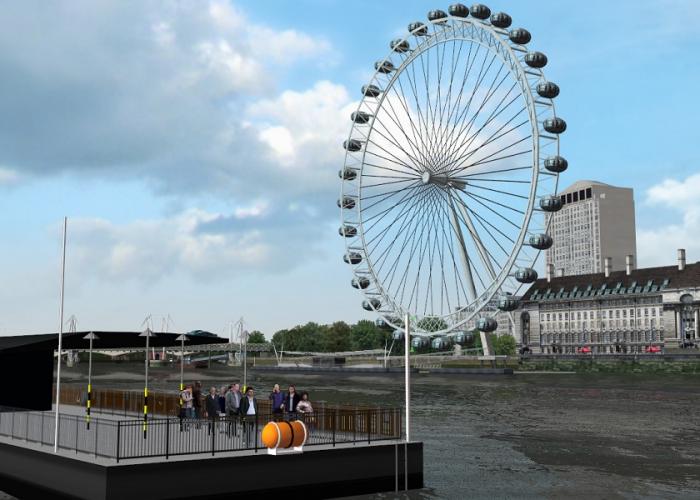Plans for London's first fully electric ferry underpinned by model work
Plans for London’s first fully electric ferry are being underpinned by HR Wallingford modelling. Using our model of the tidal Thames, we’ve helped ferry operator, Uber Boat by Thames Clippers, by assessing hydrodynamic changes and scour at the existing and proposed pontoons and piles, and predicting the effects of vessel wash on the river bank and bed.
A cross river ferry service from Rotherhithe to Canary Wharf has been operating for over 20 years. However, the current infrastructure is reaching the end of its life and this creates an opportunity to develop and operate an enhanced, all electric, zero emission, foot and cycle passenger ferry replacement.
The proposed scheme includes additional piles and an extended pontoon at Canary Wharf, as well as a replacement pontoon at Rotherhithe, which will include new piles and a small dredge.
The modelling included the all the hydrodynamic effects of the piles and pontoons in the area. To identify any impacts, we simulated the existing conditions and those for the proposed development, before comparing the two results to assess the potential changes.
We also predicted the potential scour around the new piles using a variety of desk-based empirical approaches; and assessed the potential for the wash from the new electric ferry to scour the river bank and river bed using methods from PIANC guidelines.
HR Wallingford developed the ‘Thames Base Model’ in 2001 in partnership with the Environment Agency and the Port of London Authority to assist the organisations with their regulatory responsibilities. The model has been updated, validated and calibrated continuously to a high standard.
Our team has published a number of papers of their work on the tidal Thames, which can be found in our ePrints library.


